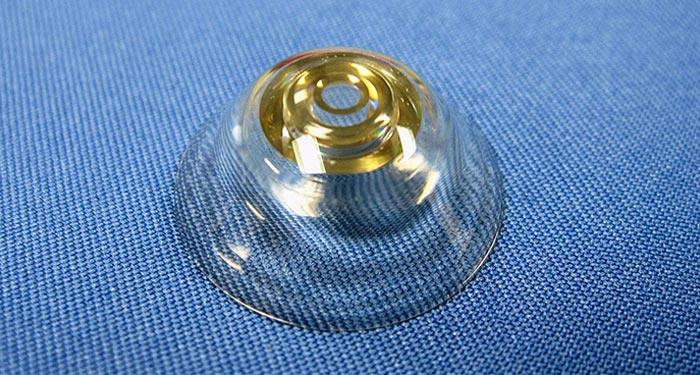
Imagine having the superhuman ability to automatically adjust your vision to see something you can’t normally see. You’d be able to read that sign that’s just too far away to make out. Or count the whiskers on your cat from across the room. Despite it sounding about as unrealistic as the long overdue hoverboards and flying cars we were promised in the last half of the twentieth century, it seems we’re well on our way to doing just this. Okay, maybe not the whisker counting, let’s be reasonable here.
We’ve come a long way since the polished reading stones used to magnify text in the Middle Ages, the mineral glass lenses of the 13th century, the invention of bifocals by Benjamin Franklin in the 19th century and the countless innovations in lenses (and contact lenses) of the last century. More recently, the tech giant Google has brought us contact lenses capable of monitoring the wearer’s blood glucose levels, and ones that have an in-built camera. It seems that we’re on the cusp of more innovation in vision, because of the advent of magnifying contact lenses capable of zooming in and out when the wearer winks.
It’s probably a good time to mention that these contact lenses are very much in the prototype stage, so put your wallets away for now, they have yet to be tested on humans (or that’s what the military would have us believe *wink*). The scientists working on them believe they are ready for human trials, though the prospect of having a 1.5mm thick larger-than-average lens cover your whole eye including the sclera (that’s the white part) doesn’t sound appealing at all. When the wearer winks, a polarized filter directs light into the telescopic section of the lens. Within each lens is a ring of aluminium mirrors configured in such a way as to bounce the light around several times, making objects appear almost 3 times larger than they are. The user then winks the other eye to switch back to normal sight mode, and light passes through normally. GO SCIENCE!
The wheels of this development were set in motion by the American military because of the need for superthin lenses for aerial drones, but as with many everyday products (the microwave and the GPS) this technology has found a more mainstream home. After further development, human testing and streamlining, it is entirely possible that the lenses could be used on the battlefield to empower soldiers with ultravision capabilities, but most importantly this could bring welcome relief to those with visual impairments, including age-related macular degeneration (AMD) – “a medical condition that usually affects older adults and results in a loss of vision in the centre of the visual field because of damage to the retina […] affecting about 30-50 million people globally”. The potential for realizing our childhood fantasies of having Superman’s eagle eye vision, combined with easing common visual impairments make this an innovation we’re excited to see happen.
Date Published: 08 July 2015
